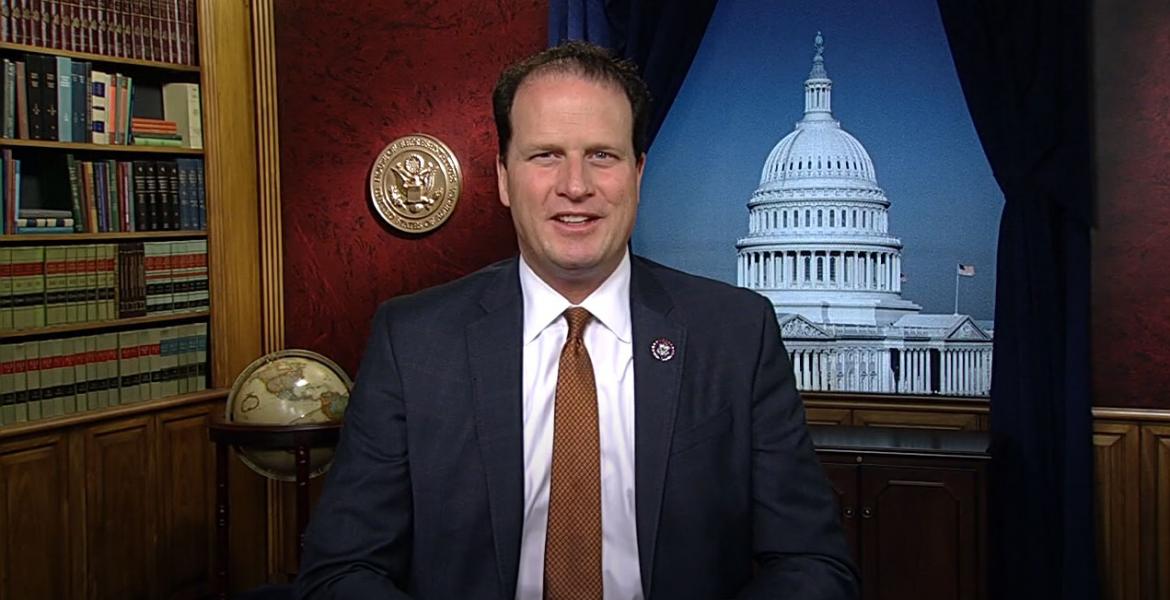City Manager Daniel Valenzuela greeted hundreds of Chamber of Commerce members Tuesday afternoon for his annual “State of the City Address”. Water, streets, development and growth were the pillars of his speech, during which he defined projects slated for the upcoming year and reflected on the year past.
“This past year, we hoped and prayed for rain, and we got it,” Valenzuela began on a positive note. “We hoped for more life in the local economy that would afford jobs and opportunities, and we got that, too. We hoped that the oilfield activity that has spawned much of that economic growth would not swamp our city’s infrastructure, our public services or our culture. I’d say that hope has been realized as well.”
Pointing to numbers on two screens at the West Texas Training Center, Valenzuela reviewed the most recent numbers from various economic areas, citing growth on all fronts over the past year. Sales tax revenues are up 10 percent, hotel tax collections are up 13.6 percent, there have been 6 percent more construction permits issued, and roughly 500 more jobs have been added, he said. Property values are up 9.7 percent, a jump that is larger than previous years.
Citing information from a recent audit conducted by a local accounting firm, Valenzuela proudly announced that the city’s assets exceeded liabilities by $226 million.
“That’s an increase of $13 million over last year,” he said. “The balance in our general fund—the portion supported by property and sales taxes—grew by $6.6 million, ending the year at $22 million in total. This means your municipal government is well managed and financially healthy.”
Water
On the subject of water, Valenzuela listed five initiatives the city currently has in progress that will ensure an adequate water supply.
“Water remains a top priority,” he said. “The bountiful rainfall at Memorial Day weekend hasn’t changed that, although it certainly eased the immediate pressure. Last year when I spoke to you, we had 16 months of water remaining. Today our water supply is at 27 months. That has given us some breathing room, but it has not diluted the sense of urgency by city management and of course, your city officials, to develop supplementary water sources that will serve San Angelo for centuries to come.”
The five initiatives mentioned include the Hickory Aquifer project, a wastewater study, the Red Arroyo study, the West Texas Water Partnership and the replacement of water mains.
Hickory Aquifer
The groundwater treatment facility for the Hickory Aquifer will be complete in November, when the facility is scheduled to come online. When it opens, the city will have access to 6 million gallons of water per day. The following spring that number will increase to 9 million gallons per day when the well expansion project is completed. The city will use only a portion of the water they’re entitled to.
“It’s only prudent to continue to bank water from the Hickory in case there comes a moment when we must rely solely upon the aquifer for San Angelo’s water,” Valenzuela said.
In the worst-case scenario, the Hickory could meet the city’s base needs for water for a brief time, Valenzuela said.
Toilet-to-Tap Study
City council approved a study to explore the potential uses of wastewater and what it would take to realize those options. Several Texas cities have begun using treated wastewater to supplement their city water supply. Some of those include Abilene, Big Spring and Wichita Falls. The city’s water utilities department estimates that effluent could yield 7 million gallons of water per day for San Angelo.
“Currently, our treatment effluent is sold and released to an irrigation district that serves local farmers,” Valenzuela said. “The council wants to explore how that water may be used here in the city.”
The wastewater study is estimated to be completed in late spring of next year.
Red Arroyo Study
The goal of the Red Arroyo study is determine what would be involved in beginning a construction project, how much it would cost and how much water it would yield.
“As you know, there are two divergent schools of thought on the viability of capturing storm water from the Arroyo,” Valenzuela said. “One is that the effort would be extremely expensive and would yield relatively little water. The other is that the project could be completed economically and could produce up to 5,000 acre-feet of water annually.”
The city used approximately 14,000 acre-feet of water last year, meaning that if the estimates are correct, the Red Arroyo could provide up to a third of the city’s annual water usage. The study is also due to be completed by late spring.
West Texas Water Partnership
The search for water sources that could serve the cities of Abilene, Midland and San Angelo continues this year, however Valenzuela said the potential water sources have already been identified. As usual, the particulars of the partnership are hush-hush, however it will be costly.
“While we can’t yet reveal much about the partnership’s worth, we can say we have identified some potential water sources and are doing our due diligence to determine their viability,” Valenzuela said. “Fair warning though, whatever the West Texas Water Partnership decides to pursue, the resulting project will be realized neither quickly nor inexpensively.”
Replacing Water Mains
The city intends to replace both aging and leaking water mains to cut down on water loss in the coming year. A similar program was implemented seven years ago following the failure of a pipeline in the southwest portion of the city. At that time, two to three miles of rusting, deteriorating pipeline was replaced at a cost of $1.3 million. Approximately 190 miles of mains and pipes need to be replaced, Valenzuela said, meaning the effort will never cease.
The city council vowed to reduce the water loss by half over the next five years, he added. The water department is currently exploring options for reducing the loss and will report their findings to the council. The city is also to seek a rate analysis to determine the costs of repair.
“I am excited to report, though, that San Angelo is embracing a culture of conservation,” he said. “Last year we used little more than 14,000 acre-feet. The year before that consumption was at nearly 16,000 acre-feet. The difference equates to about 570 million gallons of water.”
Additional Items
- Renovations on the San Angelo Regional Airport have been delayed, however the city is pursuing the search of a second airline to provide service to Mathis Field.
- A bandstand is coming to Fort Concho this year, to be reconstructed on the parade grounds.
- Sewer line improvements along the Concho are ahead of schedule, and are already 70 percent complete. The project costs $2.1 million and was initially scheduled for 12 months.
- Construction will begin on a new fire training facility in the coming months off of Highway 67 N. The facility will be used by the San Angelo Fire Department, as well as regional departments. The project is estimated to take 10 months to complete and will cost $2.6 million.
- The city is currently acquiring easements that will allow them to solve drainage issues along Ave. G and lay sidewalks along 19th St.
- The city is initiating programs to encourage community engagement in city government, including: COSA University, which is meant to spark interest in serving on city boards; Citizens 101, a monthly evening session on programs, tools and resources to build a positive, sustainable community; and Lunch and Learn, a monthly session, which will provide information about services and regulations to targeted business professionals.
- City Council approved a move into phase two of downtown development, which includes securing investor interest, crafting a strategy for financing developments, seeking zoning to accommodate development, and assuming property to encourage development and investment.
- The master plan and market strategy for Lake Nasworthy development is now in place, and features five zones, including action sports, harbor village, nature/education, special opportunity and natural encounter. The city is forging partnerships in the private and public sectors to bring the plan to fruition.
- City employees will be awarded a 5 percent pay raise this year, which will also be extended to the fire department. The police pay raise is in the final stages of negotiation and will go before council in October for ratification.
- The city is proposing to increase street maintenance budget by $2.2 million to fund additional sealcoating, crack seal and pothole repair. The plan is to repair the streets on an eight-year schedule.
- A proposed new police department has been made a priority this year, however progress is still in its infancy. The project hinges on determining whether the current building can be renovated to accommodate the needs of the department, if another building will be found and renovated or if a complete new building will be constructed.
Subscribe to the LIVE! Daily
Required






Post a comment to this article here: